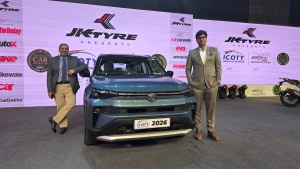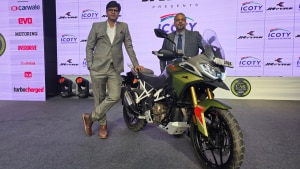A conspiracy to defame the FAME policy
Over the last few months, a slander campaign has been underway against the pioneering start-ups in the EV space in India. The charges are mostly that start-ups are securing subsidies without achieving the localisation levels outlined in the FAME scheme, implying that they are sourcing internationally, and largely importing from China. The charges keep getting wilder suggesting they are fudging sales data and even indulging in money laundering. These need to be debunked.

India's electric vehicle ecosystem has been developed almost entirely by start-ups and MSMEs - mostly enterprises that jumped into a new category of vehicles and became catalysts for promoting e-mobility. Today, just six such electric vehicle start-ups have taken India's -E2W (Electric Two-Wheeler) market from zero to almost 10 Lac units. When these entrepreneurs started manufacturing electric vehicles in 2008, there was no government subsidy, hardly any local supply chain and heavy dependence on imports of critical components. They had to additionally deal with the challenges of low awareness and low inclination for EV adoption. These are the reasons why EV makers all over the world are and continue to be supported by their respective governments.
In India, policy support came only in 2015, when the government came up with a demand incentive scheme called Faster Adoption and Manufacturing of Electric Vehicles (FAME) to encourage incremental local manufacturing of electric vehicles, reduce the share of internal combustion engine (ICE) vehicles, and thus reduce India's dependence on fossil fuels. The policy was aimed at reducing India's crude oil imports and checking rampant pollution across major Indian cities.
In 2019, when the FAME II was announced as a push for domestic manufacturing of e-vehicles with strict localisation norms, the local supply chain for components of electric vehicles was non-existent. This was especially true for key EV components such as batteries, motors, controllers, chargers and allied electronic components. Amid all these difficulties, the arrival of the COVID-19 pandemic further hurt the prospects of EV start-ups as sales nosedived, production schedules went haywire and component supplies were majorly disrupted. The electric vehicle makers had, at that time, explained to the government that EV OEMs are totally dependent in the Indian component suppliers to start developing EV-specific components but they are not yet ready to put resources and efforts into EV components because of erratic and low volumes and uncertain future and the Industry needs a bit of flexibility in implementing the localisation norms that would go a long way in hand-holding this nascent industry. This widely acknowledged absence/ disinterest of a local supply chain was an issue SMEV has been trying to resolve in close consultation with relevant ministries and policymakers. Meanwhile, the SMEV OEMs continued to pass on the complete subsidy to the customers.
EV makers all over the world are supported by their respective governments since their dependence on China for EV components continues to be heavy. China is a global supplier of good-quality EV batteries, motors, and other components. Europe imports over 4 million EVs from China every year; American companies like Tesla are manufacturing electric cars in China and are heavily dependent on that country's supply chain. This is a global reality, not exclusive to Indian EV industry players and we have to live with it until we can produce enough for ourselves.
During this transition, the role of legacy two-wheeler companies has been negligible. Understandably, companies that have heavy investments in combustion-based technology systems can hardly be expected to welcome this policy with bated breath. But the fact remains, that in India legacy two-wheeler companies have not been at the forefront of this transitional model and hence there seems to be some friction over what the policy should be and should not be. Taking advantage of this policy tension, some groups have tried to scuttle the FAME policy by trying to prove that it has allowed non-compliance to fester. The attempt seems to be to scuttle any proactive tweaks to the policy that allows start-ups to continue their march in the two-wheeler market. Remember, start-ups hold almost 70 per cent of the EV market today.
At the heart of the issue is the mismatch that is sometimes unavoidable in policy, sometimes it is a step ahead of reality and sometimes lagging behind. The disruption caused due to COVID-19 laid bare the limitations of attempting a 100% localisation effort on schedule. The policy has to accommodate bumps as it goes along if it must serve its purpose. The lag in localisation targets for OEMs has thrust the brunt of the damage to e2wheeler makers whose remit is only to produce the scooters under subsidy and pass it on to consumers. The impasse, before it could be surmounted, was convoluted by an opposing group, which prefers to remain anonymous or operates through surreptitious means and cast aspersions on everyone involved, the scooter manufacturers, the ministry officials, to bring the policy under a cloud. It became apparent that the pressure from such manipulated whistle-blowing that seemed to directly indict ministry officials of collusion that a halt was unilaterally called to examine the trumped-up charges.
SMEV has been at the forefront of pointing out that such caveats do not exist in the policy and that the act of withholding subsidy based on unsubstantiated charges was in itself a grave travesty committed by the department in an act of unusual haste and arbitrary action. The matter is under discussion at the highest levels and it is expected that a compensatory mechanism will be offered to such start-ups who have suffered in this duration. In the meantime, the association has acted against the conspiratorial actions of this vested interest group and the Ministry of Home Affairs has been duly informed and a complaint has been filed with the Cyber Cell of the Police in Gurgaon.
A vital aspect that seems to have escaped the attention of detractors is that in all the years of operations, there has not been a single safety-related incident with most of the E2W from these early start-ups. Some two-wheeler makers have attempted local assembly of batteries, for example, taking advantage of a skewed duty structure and claiming higher localisation. But without adequate expertise or safety checks, their products have led to some incidents of batteries catching fire. To prevent safety scares, SMEV members have always sourced batteries from a structured supply chain, even if imported but with a safety track record.
The canard about some start-ups bringing in completely built units and passing these off as locally built vehicles are just totally false. Fully built products attract 60% customs duty, how will they be liable for any manufacturer to import and sell under the 'Made in India' label? The campaign to disrupt the FAME policy and subsidies has created a stalemate, as EV makers look at a mountain of disbursed subsidies that are not recoverable until the subsidy backlog is cleared.
On the other hand, the EV industry is now almost ready to achieve 100% localisation and needs another 12-18 months to localise the remaining others. EV makers have been passing on the incentive to the customer, even after the subsidies were stopped, without getting reimbursed. From being a beacon of hope for the future of sustainable mobility, the e2W industry is now on the verge of collapse, thanks to a campaign by a few vested interest groups that want the FAME policy retracted.
Words: Ajay Sharma
Ajay Sharma is the Secretary General of SMEV
The opinions expressed are the views of the author alone and do not represent the views and opinions of OVERDRIVE.













